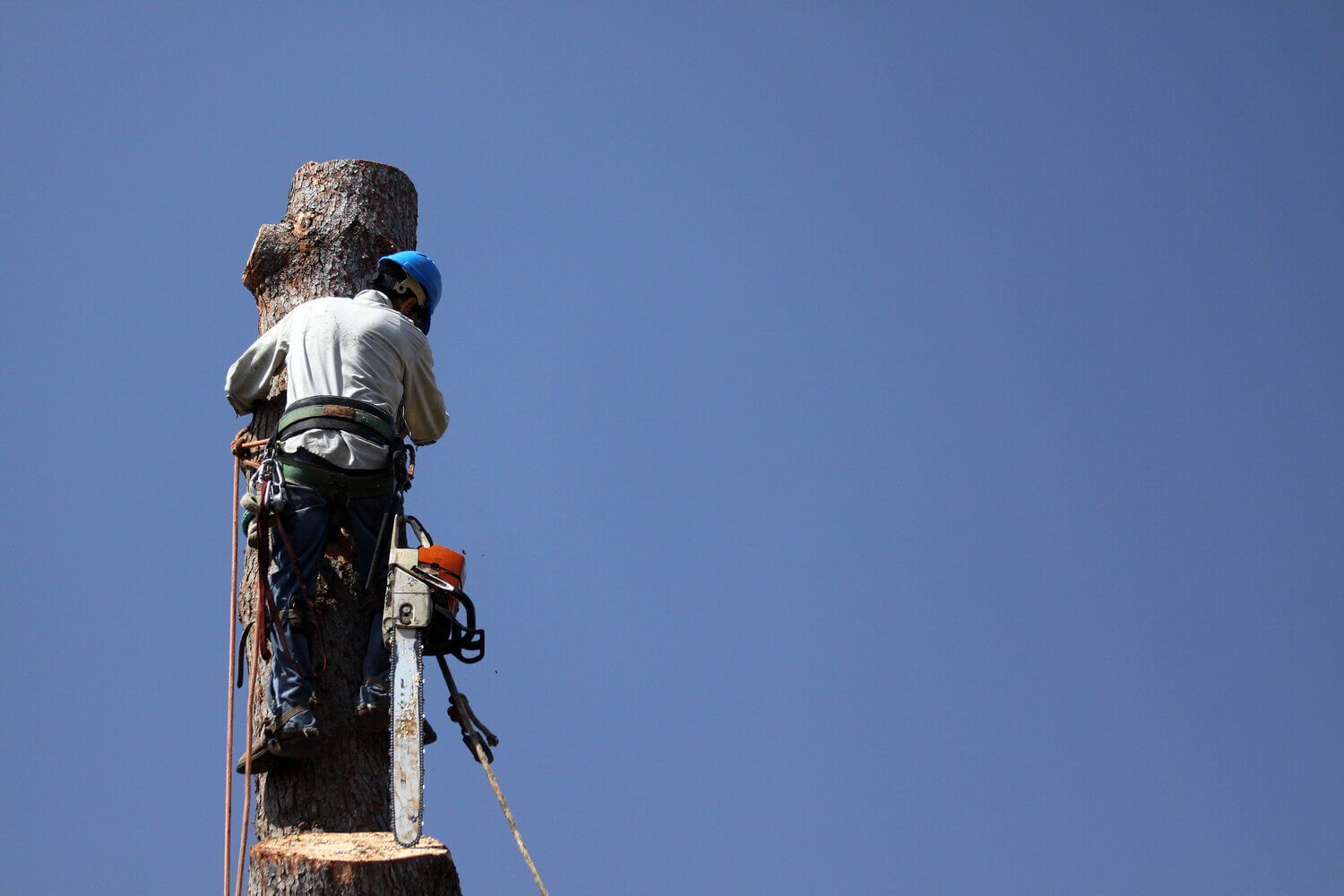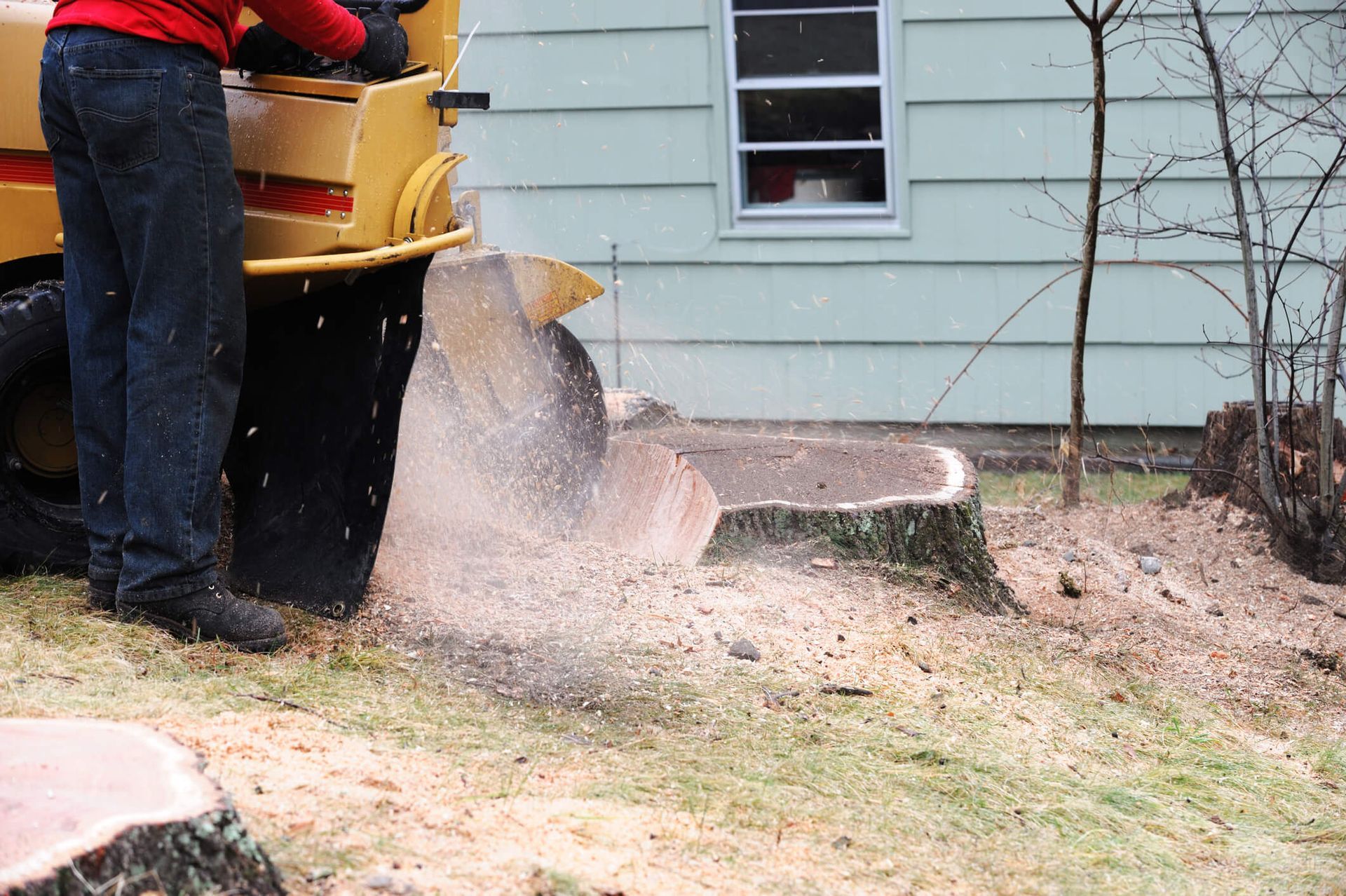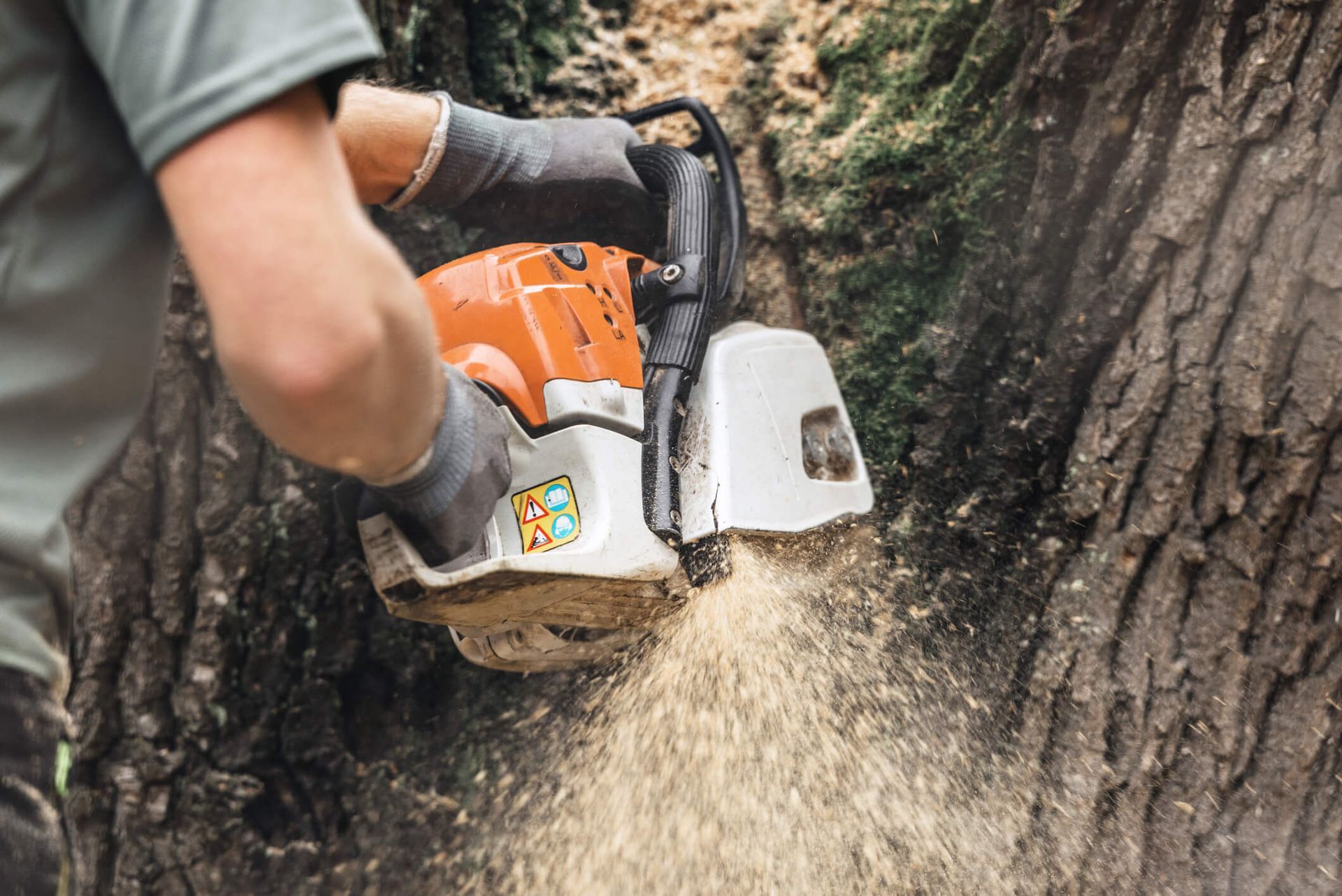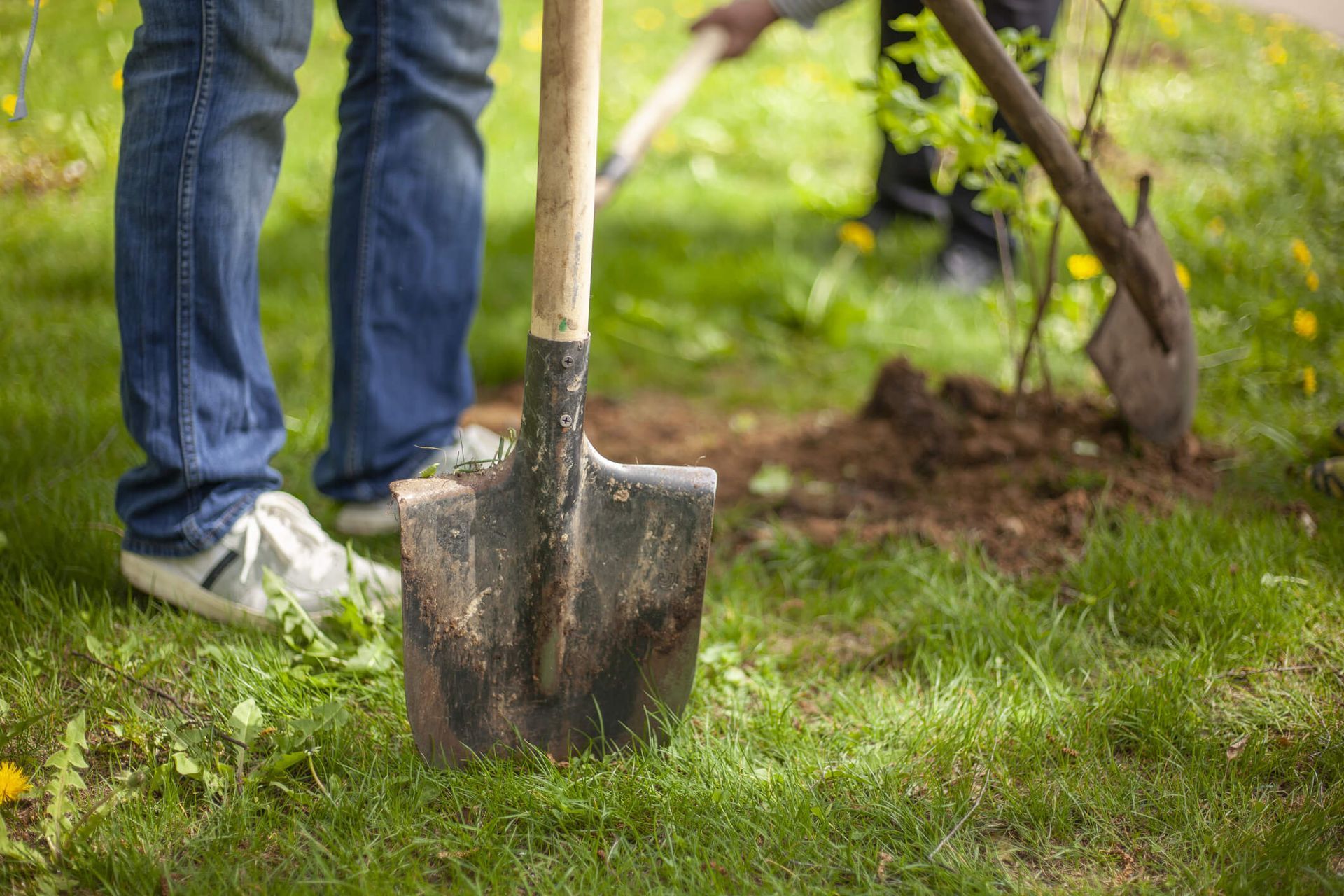How to Cut Down a Tree: The Ultimate Guide
Although it can appear simple, cutting down a tree involves meticulous preparation, the appropriate equipment such as a chainsaw, work gloves, and a hat, and knowledge of safety precautions like understanding the chainsaw bar, kickback, and the proper use of the chain brake, these measures guarantee that the job is completed effectively and securely, whether you're a professional lumberjack working on a logging site or a homeowner clearing a tree trunk to make space in your yard. It's essential to assess the work area, ensure you have the proper permit, and be mindful of power lines, fire hazards, and other potential risks. Familiarizing yourself with maintaining a steady motion and avoiding unsafe items or conditions can help prevent accidents.
Always check the clearance around you and take the time to plan the best approach for each cut. This includes understanding the site, the direction of the tree's fall, and how to safely handle your axe or chainsaw. A clear idea of the job will help you avoid obstacles and hazards in the work area. Taking the time to properly assess the tree trunk, plan your cuts, and ensure a safe environment will help ensure your safety. This is your go-to resource for tree-cutting advice, including tips on on-site safety and the best equipment handling techniques.
Tools and Equipment Needed
The following instruments and supplies are necessary for a safe and efficient tree-cutting operation:
- Chainsaw: Make sure the chainsaw is adequately fueled and sharp.
- Safety Gear: Safety equipment includes steel-toed boots, gloves, safety glasses, ear protection, and a helmet.
- Felling Wedges: These help direct the tree's descent and keep the saw from pinching.
- Measuring Tape: Using a measuring tape, you can plot the fall zone and determine the tree's height.
- Rope: Helpful for securing limbs or directing smaller trees to fall.
- First Aid Kit: Always keep a first aid kit in an emergency.
Using the appropriate instruments reduces risks and guarantees the task is completed effectively.
Assessing the Tree and Surroundings
To guarantee safety and appropriate planning, it is crucial to conduct a complete assessment of the tree and its surroundings before removing it. What to look for is as follows:
- Tree Health: Look for rot, illness, or structural harm signs. When fallen, a weak or hollow tree may behave erratically.
- Tree Lean: Note the tree's inherent slant. This will help you determine which way it is most likely to fall.
- Obstacles: Look for buildings, fences, electricity lines, or trees in the area. This could be dangerous and prevent the tree from falling.
- Wind Direction: The wind may impact the tree's fall. Before proceeding, pay attention to wind patterns.
- Escape Route: Locate a clear escape route in case the tree starts to collapse. It ought to be 45 degrees away from the fall's direction.
By carefully weighing these variables, you may make wise choices and guarantee the tree is felled safely.
Safety Gear and Precautions
Safety should always come first when chopping down a tree. Accidents and injuries can be avoided by donning the appropriate safety equipment and taking the required safety measures. What you need is as follows:
- Helmet: A helmet shields your head from flying debris and branches.
- Goggles: Protect your eyes from flying wood chips, debris, and sawdust.
- Ear Protection: Long-term exposure to loud noises like chainsaws can harm hearing. Put on earplugs or earmuffs.
- Gloves: Give you a firm hold on tools while shielding your hands from splinters and wounds.
- Steel-Toed Boots: Steel-toed boots shield your feet from equipment and falling branches.
- Chainsaw chaps: To prevent chainsaw mishaps, wear them over your legs.
Extra Safety Measures
- Examine the weather: Steer clear of pruning trees when it's windy or raining.
- Collaborate with a Partner: Keep someone close by in case of an emergency.
- Clear the Area: Ensure no people, animals, or obstructions are near the tree.
- Take rests: To keep awake and prevent fatigue, take regular rests.
Donning the appropriate safety equipment and following these procedures can reduce dangers and guarantee a safe tree-cutting experience.
Determining the Cutting Method
Selecting the appropriate cutting technique is essential to guarantee that the tree falls safely in the intended direction. Depending on the size, lean, and environment of the tree, there are several methods to think about:
- Notch Cut (Felling Cut): The most popular technique for controlling a tree's fall is a notch cut, sometimes called a "falling cut." A V-shaped notch must be made on the tree's side, facing where you want it to fall. This cut produces a regulated break and aids with tree guidance.
- Horizontal Felling Cut: After the notch has been made, a horizontal cut is made just above the horizontal base. This cut should be level and slightly above the notch to manage the tree's fall, leaving a "hinge" of uncut wood.
- Back Cut: This cut is made on the other side of the notch, just above the horizontal cut. The rear cut should be level and horizontal to guarantee that the tree falls as intended. A tiny "hinge" of wood should be left to direct the tree's descent.
- Wedges: For large or difficult-to-remove trees, felling wedges can help guide the fall and prevent the tree from becoming caught. These wedges are placed into the back cut to move the tree in the proper direction.
- Rope-Assisted Method: A rope can help direct a tree's fall close to buildings or electricity lines. This approach necessitates more preparation and cooperation.
Evaluating the tree's size, length, and surroundings can help you select the best cutting technique to guarantee a safe and regulated felling procedure.
Preparing the Tree for Cutting
For tree removal to be safe and successful, the tree must be adequately prepared before any cuts are made. Here is how to get ready:
- Examine the Tree: Look for any apparent rot, disease, or structural harm indications. If the tree is compromised or unsteady, consider contacting a specialist.
- Clear the Area: To guarantee a clear working area, remove any obstructions near the tree, such as rocks, trash, or equipment. Additionally, ensure that no people, pets, or valuables are in the area.
- Choose the Fall Zone: Choose where you would like the tree to fall. No buildings, electrical lines, or other trees should exist in this vast, unobstructed space. Mark it to make sure this area is safe and transparent.
- Verify the Tree's Lean: Note the tree's inherent lean. Plan your cuts appropriately since a tree that leans in a specific direction will probably fall in that direction.
- Establish an Escape Route: To create an escape route, choose two paths 45 degrees from the tree's fall path. These paths must be unobstructed and offer a prompt means of retreating in case of emergency.
- Get Your Equipment Ready: Ensure your chainsaw is fueled, sharp, and operating well. Verify that your safety equipment is there and operating.
Thoroughly prepping the tree and the surrounding area can guarantee a safer and more effective cutting procedure. Proper preparation also lowers hazards, making a regulated and successful tree removal more likely.
Making the Initial Notch Cut
A crucial part of felling a tree is making a notch cut, which directs the tree's fall in the intended direction. Here's how to cut a notch effectively:
- Position Yourself Properly: Stand to the side of the tree to ensure a safe escape path and a clear view of the cutting area.
- Select the Notch Location: The notch should be constructed on the side of the tree facing the direction you want it to fall. It should be around one-third of the way through the tree's diameter, at waist height.
- Execute the Horizontal Cut: Cut 70 degrees from the ground to begin. This cut ought to be roughly one-third the diameter of the tree. This will form the notch's lower portion.
- Make the Vertical Cut: Create a V-shaped cut by intersecting the horizontal cut with a vertical cut. The angle between the two cuts should be approximately 45 degrees, with the vertical cut somewhat above the horizontal cut. This will produce a notch that aids in guiding the tree's descent.
- Take Out the Wedge: Once you've made both cuts, remove the wedge-shaped piece of wood. This will produce a notch that will act as a fall guide for the tree.
You can control the felling operation by cutting the notch properly while ensuring the tree falls in the proper direction. The notch is necessary to guide the tree and prevent it from tilting or falling unpredictably.
Felling the Tree Safely
Making the felling cut, which will bring the tree down in a controlled manner, comes after making the notch cut. Here's a safe way to accomplish it:
- Position the Chainsaw: Move the chainsaw from the notch to the other side of the tree. At around the same height as the notch's horizontal base, the felling cut should be just above the notch's horizontal cut.
- Start the Felling Cut: Make sure the chainsaw is level and parallel to the ground before cutting horizontally. The aim is to cut straight across with a tiny "hinge" of uncut wood between the notch and the felling cut. This hinge will assist in controlling the direction and guiding the tree's fall.
- Keep an eye on the Cut: Take occasional breaks to assess the tree's location while cutting. If the tree begins to tilt in the wrong direction, use falling wedges to help guide it. Insert the wedges into the felling cut to exert pressure and guide the tree's fall.
- Keep the Hinge: One to two inches of uncut wood should be on the hinge. This will guide the tree and prevent it from falling too soon or unexpectedly.
- Get Ready to Retreat: As soon as the tree starts to sag, stop pruning and head straight for your escape path. Consider two or more escape routes, each angled 45 degrees from the tree's fall path.
- Keep an Eye Out for Movement: The tree may move swiftly once it begins to fall. Maintain a safe distance and be on the lookout for unexpected changes or falling branches.
You can safely fall on the tree by following these instructions and exercising caution to ensure it falls in the intended direction without endangering you or your surroundings.
Limbing and Bucking After the Fall
After the tree has fallen, the trunk should be chopped into manageable parts (bucking), and the branches should be carefully removed (limbing). Here's how to accomplish it:
Limbing the Tree
- Start at the Base: Work your way up the tree by pruning off the smaller branches close to the base. Branches should always be cut from the other side of the tree, keeping a safe distance from the trunk.
- Cutting Method: For larger branches, employ a notch-and-cut method. Make a horizontal cut on the bottom of the branch to keep the chainsaw from pinching. Then, make a top cut to finish the removal.
- Maintain Control: Pay attention to how your body is positioned as you cut through branches. Never stand directly beneath the branches you're chopping; instead, stand to the side of the tree.
- Use a Ladder or Bucket: If a branch is too high to cut from the ground, use a ladder or bucket lift to reach it securely.
Bucking the Tree
- Cut in Sections: After the tree has been limbed, cut the trunk into "logs" or manageable pieces. Beginning at the bottom, work your way up. The size of each portion will depend on how you want to remove or move the wood.
- Cutting Technique: Make sure your cuts are straight and level while bucking. Cut horizontally first, then vertically to prevent chainsaw binding on massive trunks.
- Stabilize the Tree: Ensure the portions are stable and won't suddenly move as you cut. If needed, use wedges to assist in stabilizing more significant pieces.
- Safety first: When limbing and bucking, always keep your chainsaw blade sharp and wear the appropriate safety equipment, including gloves and protective chaps.
Once the tree has fallen, you can limb and buck it securely and effectively using these methods. If branches and trunk parts are correctly handled, the process will go more smoothly, and there will be less chance of harm.
Disposal of Tree Debris
After the tree has been chopped down, limbed, and bucked, it's critical to dispose of the waste appropriately. Here are some tips for managing the cleanup effectively and securely:
Branches and Small Wood
- Chipping: A wood chipper can turn smaller branches into mulch, which you can use in your landscape or garden.
- Bundling: If you don't have a chipper, collect smaller branches and tie them together with twine to make disposal easier. Numerous local garbage services will pick up bundled branches.
- Composting: An environmentally beneficial method of getting rid of smaller twigs and leaves is to compost them.
Bigger Trunks and Logs
- Cut into Manageable Sections: Slice the trunk into smaller pieces to preserve the wood. These can be used for do-it-yourself woodworking projects or as firewood.
- Firewood: To season the chopped logs, stack them in a dry, well-ventilated place. Once they have dried out, they can be used as firewood.
- Removal Services: If you don't want to keep the timber, contact a nearby tree removal agency or garbage disposal business to have the bigger logs removed.
Stump Disposal
- Grinding: A stump grinder can grind the stump to ground level, enabling you to cover the area with grass or other vegetation.
- Manual Removal: You can physically dig out a small stump using a shovel and ax. Consider having a professional remove larger stumps.
- Leave It: If the stump isn't in the way, you may leave it in place in certain situations. Over time, it will naturally break down, albeit it may take years.
Environmental Factors
- Recycling: Tree debris recycling programs are available in many localities. Contact your local trash management service to find out if they take tree debris for recycling into mulch or other goods.
- Avoid Burning: Because of air quality restrictions, burning tree debris can harm the environment and is frequently forbidden in some places. Before burning, be sure you are following local regulations.
Properly disposing of tree debris keeps your property tidy and ensures that the materials are handled in an environmentally appropriate manner. These procedures will help you complete the task securely and effectively, regardless of whether you recycle, compost, or repurpose the wood.

Conclusion
Tree cutting requires thorough preparation, the appropriate equipment, and a dedication to safety. According to the instructions provided in this guide, you can guarantee a successful and easy process, from evaluating the tree to cleaning up after the job is finished. When assessing the tree, consider your cuts' kerf, depth, and width to ensure proper control. Be mindful of the tree's radius, the tension in the wood, and the angle of the cut on the underside of the log. Always maintain a safe distance from structures, vehicles, and power lines. If the tree is close to these hazards or particularly tall, hiring a professional is advisable.
The process will be effective and stress-free if you take the time to plan and prioritize safety, whether you're removing a dangerous tree or making room for a new project. Ensure that the person cutting the tree is equipped with a harness, and always use the proper techniques when making cuts to control the fall. Keep your arms and tools within sight, and be aware of any obstacles in the area, such as sticks or logs. By following these guidelines and using the correct information, you can take on this fulfilling activity with confidence and skill.
Frequently Asked Questions
What legal repercussions result from removing a tree from someone else's property?
Restitution, fines, or legal action may follow removing a tree from someone else's land without their consent. Verify local laws and always get consent.
Is it possible to use the wood from a fallen tree?
Yes, depending on the type and condition of the tree, its wood can be used for construction projects, furniture, firewood, and mulch.
Before chopping, how should the space surrounding the tree be prepared?
Remove any objects that a falling tree, obstructions, and debris from the vicinity might harm. Maintain a safe distance between people and dogs.
If my chainsaw becomes lodged in a tree, what should I do?
After turning off the chainsaw, pry open the cut with a wedge to release the blade. If the saw is forced out, the chain may be damaged.
How can I avoid "widow makers," and what are they?
"Widowmakers" are big limbs or branches that can suddenly fall when a tree is cut down. Before cutting, check the tree and trim any damaged or loose branches.
What should I do if the tree falls in the wrong direction?
If the tree starts to fall in the wrong direction, use your escape path to leave immediately. Do not attempt to halt or reroute the fall on your own.
How can I determine whether it's safe for me to chop down a tree?
If a tree is small to medium, healthy, and away from buildings, electrical lines, or other potential dangers, it is usually safe to chop it down yourself. A professional should be consulted for larger or damaged trees.
When is the ideal season for tree cutting?
It is ideal to take down a tree when it is dormant, such as in late fall or early winter. This causes less harm to the nearby vegetation and less sap flow.
What is the duration required to cut down a tree?
The tree's size, type, and amount of experience will determine its time. Larger trees may take several hours or longer, whereas smaller trees may take less than an hour.
When should I get a tree cut by a professional?
If the tree is particularly big, close to buildings or electrical lines, or you don't have the right equipment or skills, hire a professional. Safety should always be a priority.
Professional Advice on Tree Cutting
Are you having trouble removing a dangerous or undesired tree from your property? SYS Enterprises specializes in offering professional advice and tree-cutting services. Our qualified arborist can help whether you're a property manager dealing with overgrown or damaged trees in your forested areas or a homeowner hoping to enhance the safety and aesthetics of your yard. We guide you through the necessary steps, from assessing the tree's location to making the first cut. Whether dealing with a tree near power lines or at a tricky point in your yard, we provide expert tips to ensure the job is done safely and efficiently.
SYS Enterprises' Potential Assistance
At SYS Enterprises, we offer more than just tree cutting—we provide comprehensive solutions tailored to your needs:
- Tailored Evaluations: Our staff evaluates the tree's condition, size, and placement to identify the safest and most efficient removal technique.
- Professional and Secure Services: We employ state-of-the-art machinery by experts to guarantee accuracy and security.
- Effective Management of Debris: We take care of all post-removal cleanup, from mulching to firewood preparation or wood recycling, leaving your property tidy and usable.
- Extra Services: Besides tree cutting, we provide stump grinding, emergency tree removal, pest control, pruning, and landscaping services to meet your tree care requirements.
Managing the Laws Regarding Tree Cutting
Tree removal may need to abide by environmental laws, HOA rules, or local ordinances. SYS Enterprises streamlines this procedure by offering knowledgeable counsel and support in securing required permits and guaranteeing adherence to legal requirements. Whether you're dealing with trees in a dense forest, near brush, or close to power lines, our team ensures that you always follow the proper guidelines. We also provide tips on handling obstacles, such as sticks or other debris, to avoid complications during removal. Comprehending these rules is essential to preventing penalties or issues. SYS Enterprises can assist with anything from navigating municipal ordinances to recognizing protected tree species.
SYS Enterprises: Why Choose Them?
- Skilled Experts: Our licensed arborists are prepared to handle trees of all shapes and sizes with skill and consideration.
- Eco-Friendly Practices: We value sustainable techniques and guarantee that the tree removal procedure impacts the environment as little as possible.
- Client-Focused Approach: We customize our services to match your unique requirements and preferences from the initial consultation to the end.
Make an appointment for your consultation right now!
Avoid letting an undesired or dangerous tree jeopardize your property's security or beauty. Contact SYS Enterprises right now to arrange a meeting with our knowledgeable staff.
By working with SYS Enterprises, you invest in your property's security, use, and aesthetics rather than merely removing a tree. Let us handle the intricate tree-trimming process so you can rest easy knowing the work will be done correctly.
Get in touch now for professional tree care services to revamp your outdoor area!


